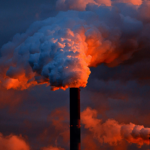Implications of the Russian-Ukrainian Conflict
<1 Min. Read Time

What implications does the Russian-Ukrainian conflict have on the European ETS and global carbon futures? European countries are turning to coal to generate electricity amidst the current energy crisis, which is leading to more demand (and higher prices) for carbon credits. Is there any talk of temporary regulatory pauses on ETS requirements that could disrupt the ETS marketplace?
As EUAs return another 7% from Tuesday's 17.5%, we are seeing some of the market panic subside. At the same time we are also seeing option hedgers having to buy back as it rises. I also suspect the short sellers are taking a bath. If they're not already washed out, they will be soon, which should further help markets.
The slide back towards coal certainly increases emissions (with a slight offset from extended nuclear use) and therefore demand for allowances. So far, the European Commission is showing zero signs of any back-peddling despite elevated energy prices and arguably increased pressure. The EU voted 52 to 13 (5 abstained) to maintain the Market Stability Reserve, absorbing 24% of EUA auctions on Friday. Fit for 55, the EUA tightening package, is expected to pass and continue as expected pre-invasion. While there is undoubtedly more political risk priced into the ETS when energy prices are exponentially higher due to the conflict, there is not currently any wavering from policymakers.
EUAs are down a net 23% since the initial peak at the beginning of the invasion, having come back 25% from the trough. First, the lower price itself has already relieved some pressure on the market. Second, this sell-off was driven by technical selling with participants wary to rejoin until some of the fundamentals were clarified. With some of the panic subsiding, markets have begun bouncing back supported by some of the same technical factors (i.e. gamma squeeze) assisting.










